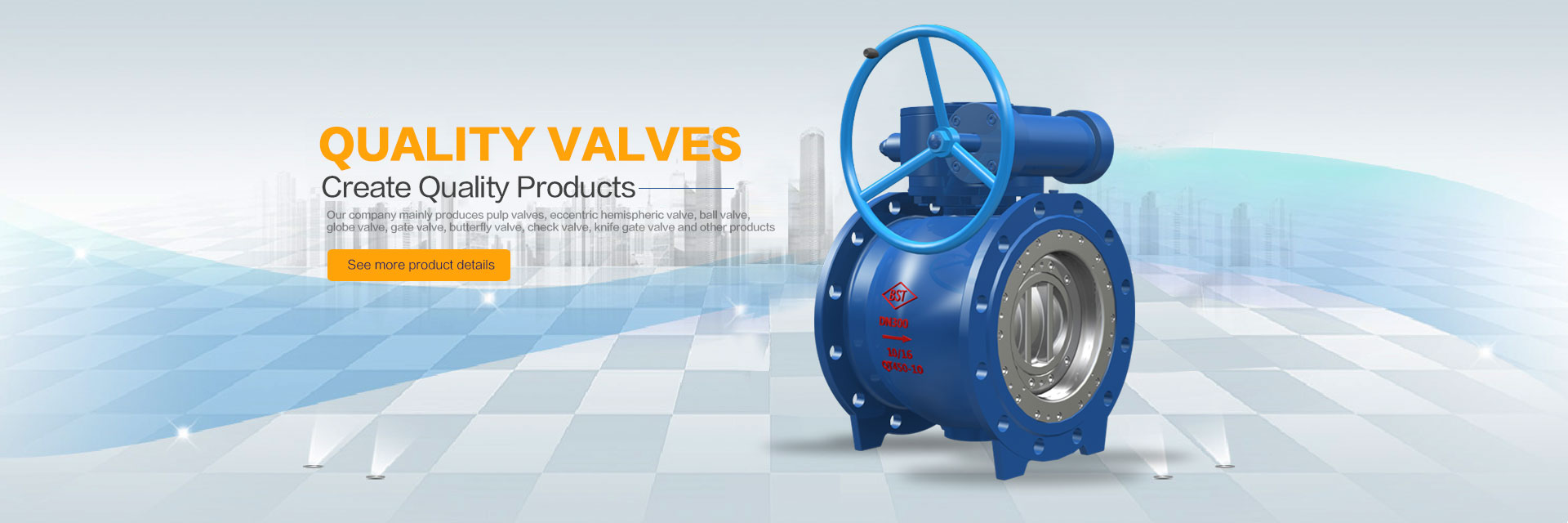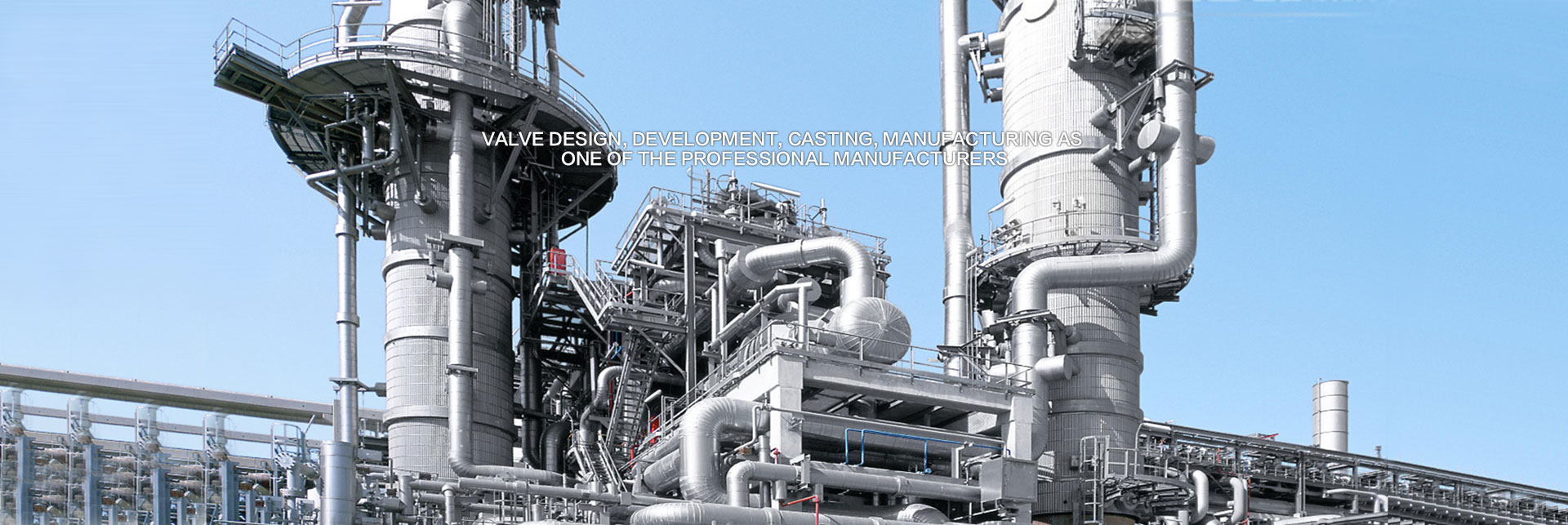Comparison table of the relationship between valve size and medium velocity
It is well known that the flow rate and flow rate of the valve mainly depends on the size of the valve, and the valve structure type of the resistance to the medium, at the same time with the pressure of the valve, temperature and the concentration of the medium and other factors have a certain internal relationship.Valve flow area and flow velocity, flow rate has a direct relationship, and flow rate and flow are interdependent two quantities.When the flow rate is constant, the flow rate is large, the flow area can be smaller;Small velocity, the flow area can be larger.On the contrary, the flow area is large and the velocity is small.The runner area is small and the velocity is high.
1, the flow rate of the medium is large, the valve diameter can be small, but the resistance loss is large, the valve is easy to damage.High flow rate, the flammable and explosive media will produce electrostatic effect, resulting in danger;The flow rate is too small, inefficient, and uneconomical.For high viscosity and explosive medium, should be a small flow rate.The flow rate of oil and liquid with high viscosity is selected according to the viscosity, generally 0.1 ~ 2m/s.
2. Generally speaking, the flow rate is known and the flow rate can be determined by experience.Nominal size of valve can be calculated by flow rate and flow rate.
3, the valve size is the same, its structure is different, fluid resistance is not the same.Under the same conditions, the greater the resistance coefficient of the valve, the more fluid flow through the valve velocity, flow rate drop;The smaller the valve resistance coefficient is, the less the flow rate and flow rate decreases through the valve.
| Fluid name | Conditions of use | Velocity(m/s) |
| Saturated steam | DN>200 DN=200~100 DN<100 | 30~40 25~35 15~30 |
| Superheated steam | DN>200 DN=200~100 DN<100 | 40~60 30~50 20~40 |
| Low pressure steam | ρ<1.0(Absolute pressure) | 15~20 |
| Medium pressure steam | Ρ=1.0~4.0(Absolute pressure) | 20~40 |
| High pressure steam | Ρ=4.0~12.0(Absolute pressure) | 40~60 |
| Compressed gas | Vacuum Ρ≤0.3(Gage pressure) Ρ=0.3~0.6(Gage pressure) Ρ=0.6~1.0(Gage pressure) Ρ=1.0~2.0(Gage pressure) Ρ=2.0~3.0(Gage pressure) Ρ=3.0~30.0(Gage pressure) | 5~10 8~12 10~20 10~15 8~12 3~6 0.5~3 |
| oxygen | Ρ=0~0.05(Gage pressure) Ρ=0.05~0.6(Gage pressure) Ρ=0.6~1.0(Gage pressure) Ρ=1.0~2.0(Gage pressure) Ρ=2.0~3.0(Gage pressure) | 5~10 7~8 4~6 4~5 3~4 |
| Gas | 2.5~15 | |
| Semi water gas | Ρ=0.1~0.15(Gage pressure) | 10~15 |
| Natural gas | 30 | |
| Nitrogen | Ρ=5~10(Absolute pressure) | 15~25 |
| ammonia | vacuum Ρ<0.3(Gage pressure) Ρ<0.6(Gage pressure) Ρ≤2(Gage pressure) | 15~25 8~15 10~20 3~8 |
| Acetylene water | 30 5~6 | |
| Acetylene water | ρ<0.01(Gage pressure) ρ<0.15(Gage pressure) ρ<2.5(Gage pressure) | 3~4 4~8 5 |
| chlorine | Gas liquid | 10~25 1.6 |
| 氯化氫 | 氣體 液體 | 20 1.5 |
| Liquid ammonia | Vacuum Ρ≤0.6(Gage pressure) Ρ≤2.0(Gage pressure) | 0.05~0.3 0.3~0.8 0.8~1.5 |
| Sodium hydroxide | Concentration 0~30% Concentration 30%~505 Concentration 50%~73% | 2 1.5 1.2 |
| Sulfuric acid | Concentration 88%~93% Concentration 93%~100% | 1.2 1.2 |
| HCl | 1.5 | |
Water has a similar viscosity to liquids | Ρ=0.1~0.3(Gage pressure) Ρ≤1.0(Gage pressure) Ρ≤8.0Gage pressure) Ρ≤20~30(Gage pressure) Heat network circulating water, cooling water | 0.5~2 0.5~3 2~3 2~3.5 0.3~1 |
| Water has a similar viscosity to liquids | Pressure backwater | 0.5~2 |
| Water has a similar viscosity to liquids | No pressure backwater | 0.5~1.2 |
| Tap water | DirectorΡ=0.3(Gage pressure) BranchΡ=0.3(Gage pressure) | 1.5~3.5 1~1.5 |
| Boiler feed water | >3 | |
| Steam condensate | 0.5~1.5 | |
| Condensate | Gravity | 0.2~0.5 |
| Hot water | 2 | |
| Sea water, slightly alkaline water | Ρ<0.6(Gage pressure) | 1.5~2.5 |
Examples:
The resistance coefficient of gate valve is small, only within the range of 0.1 ~ 1.5.Gate valve with large diameter, the resistance coefficient is 0.2 ~ 0.5;Shrinkage gate valve resistance coefficient is larger.
The resistance coefficient of globe valves is much larger than that of gate valves, generally between 4 and 7.Y-type globe valve (direct flow) has a small resistance coefficient between 1.5 and 2.Forged steel globe valve resistance coefficient is large, even up to 8.
The resistance coefficient of the check valve depends on the structure: swing check valve is usually about 0.8 ~ 2, in which the multi-lobe swing check valve has a larger resistance coefficient;Lift check valve resistance coefficient, up to 12.
Plug valve resistance coefficient is small, usually about 0.4 ~ 1.2.
The resistance coefficient of diaphragm valve is generally around 2.3.
Butterfly valve resistance coefficient is small, generally within 0.5.
Ball valve resistance coefficient is small, generally around 0.1.
Remark: the resistance coefficient of the valve is the value when the valve is fully open.
The selection of valve size should take into account the machining accuracy and dimension deviation of the valve, as well as other factors.Valve size should be adequate, generally 15%.In practice, the size of the valve varies with the size of the process line.
Knowledge: valve size and inch comparison table valve size (DN) and diameter comparison table









